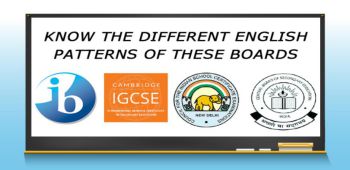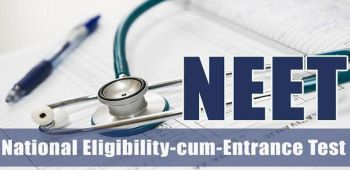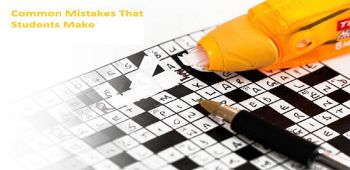Tripura Board Class 12th Physics Syllabus
TRIPURA BOARD OF SECONDARY EDUCATION
Syllabus of Physics (Class 12)
PHYSICS
COURSE STRUCTURE
Class XII (Theory)
One Paper Time: 3 Hours Marks:70
Unit Title Marks I. Electrostatics 08
II. Current Electricity 07
III. Magnetic effect of current & Magnetism 08
IV. Electromagnetic induction & Alternating current 08
V. Electromagnetic Waves 03
VI. Optics 14
VII. Dual Nature of Matter 04
VIII. Atoms and Nuclei 06
IX. Electronic Devices 07
X. Communication Systems 05
Total 70
UNIT I. Electrostatics (25 periods)
Electric Charges: Conservation of charge, Coulomb’s law-force between two point charges, forces, forces between multiple charges; superposition principle and continuous charge distribution.
Electric field, electric field due to a point charge, electric field lines; electric dipole, electric field due to a dipole; torque on a dipole in uniform electric field. Electric flux, statement of Gauss’ theorem and its application to find field due to infinitely long straight wire, uniformly charged infinite plane sheet and uniformly charged thin spherical shell (field inside and outside).
Electric potential, potential difference, electric potential due to a point charge, a dipole and system of charges; equipotential surfaces, electrical potential energy of a system of two point charges and of electric dipole in a electrostatic field.
Conductors and insulators, free charges and bound charges inside a conductor. Dielectrics and electric palarisation, capacitors and capacitance, combination of capacitors in series in parallel, capacitance of a parallel plate capacitor with one without dielectric medium between the plates, energy stored in a capacitor. Van de Graaff generator.
UNIT II. Current Electricity (25 periods)
Electric current, flow of electric charges in a metallic conductor, drift velocity, mobility and their relation with electric current; Ohm’s law electrical resistance, V-I Characteristics (linear and non-linear), electrical energy and power, electrical resistivity and conductivity.
Carbon resistors, colour code for carbon resistors; series and parallel combinations of resistors; temperature dependence of resistance. Internal resistance of a cell, potentia difference and emf of a cell, combination of cells in series and in parallel. Elementary idea of secondary cells. Kirchoffs’ laws and simple applications. Wheatstone bridge, metre bridge.
Potentiometer – principle and its applications to measure potential difference and for comparing emf of two cells; measurement of internal resistant of a cell.
UNIT III. Magnetic effects of current and magnetism (25 periods)
Concept of magnetic field, Oersted’s experiment.
Biot – Savart law and its application to current carrying circular loop.
Ampere’s law and its application to infinitely long straight wire, straight and toroidal solenoids.
Force on a moving charge in uniform magnetic and electric fields. Cyclotron. Force on a current-carrying conductor-definition of ampere. Torque experienced by a current loop in uniform magnetic field; moving coil galvanometer- its current sensitivity and conversion to ammeter and voltmeter. Current loop as a magnetic dipole and its magnetic dipole moment. Magnetic dipole moment of a revolving electron.
Magnetic dipole moment. Magnetic dipole moment of a revolving electron. Magnetic field intensity due to a magnetic dipole (bar magnet) along its axis and perpendicular to its axis. Torque on a magnetic dipole (bar magnet) in a uniform magnetic field; bar magnet as a equivalent solenoid, magnetic field lines; Earth’s magnetic field and magnetic elements. Para-, dia- and ferro- magnetic substances, with examples. Electromagnets and factors affecting their strengths. Permanent magnets.
UNIT IV. Electromagnetic Induction & alternating currents (20 periods)
Electromagnetic induction; Faraday’s laws, inducted emf and current; Lenz’s Law, Eddy currents. Self and mutual induction.
Alternating currents, peak and rms value of alternating current / voltage; reactance and impedance; LC oscillations (qualitative treatment only), LCR series circuit, resonance; power in AC circuits, wattless current. AC generator and transformer.
UNIT V. Electromagnetic waves (4 periods)
Need for displacement current.
Electromagnetic waves and their characteristics (qualitative ideas only). Transverse nature of electromagnetic waves.
Electromagnetic spectrum (radio waves, microwaves, infrared, visible, ultraviolet, X-rays, gamma rays) including elementary facts about their uses.
UNIT VI. Optics (30 periods)
Reflection of light, spherical mirrors, mirror formula. Refraction of light, total internal reflection and its applications, optical fibres, refraction at spherical surface, lenses, thin lens formula, lens-maker’s formula. Newton’s relation : Displacement method to find position of images (conjugate points) Magnification, power of a lens, combination of thin-lenses in contact, combination of a lens and a mirror. Refraction and dispersion of light through a prism.
Scattering of light – blue colour of the sky and reddish appearance of the sum at sunrise and sunset. Elementary idea of Roman effect.
Optical instruments : Human eye, image formation and accommodation, correction of eye defects (myopia, hypermetropia, presbyopia and astigmatism) using lenses. Microscopes and astronomical telescopes (reflecting and refracting) and their magnifying powers.
Wave optics : Wavefront and Huygen’s principle, reflection and refraction of plane wave at a plane surface using wave fronts. Proof of laws of reflection and refraction using Huygen’s Principle. Interference, Young’s double slit experiment and expression for fringe width, coherent sources and sustained interference of light. Diffraction due to a single slit, width of central maximum. Resolving power of microscopes and astronomical telescopes. Polarisation, plane polarised light; Brewster’s law, uses of plane polarised light and Polaroids.
UNIT VII. Dual Nature of Matter and Radiation (8 periods)
Dual nature of radiation. Photoelectric effect, Hertz and Lenard’s observations; Einstein’s photoelectric equation-particle nature of light.
Matter waves-wave nature of particles, de Broglie relation. Davisson-Germer experiment (experimental details should be omitted; only conclusion should be explained).
UNIT VIII. Atoms & Nuclei (18 periods)
Alpha-particle scattering experiment; Rutherford’s model of atom; Bohr model, energy levels, hydrogen spectrum. Continuous and characteristic X-rays. Composition and size of nucleus, atomic masses, isotopes, isobars; isotones. Radioactivity alpha, beta and gamma particles/rays and their properties; radioactive decay law.
Mass-energy relation, mass defect; blinding energy per nucleon and its variation with mass number; nuclear fission and fusion.
UNIT IX. Electronic Devices (18 periods)
Energy bands in solids, conductors, insulators and semiconductors; semiconductor diode – I-IV characteristics in forward and reverse bias, diode as a rectifier, I-V Characteristics in forward and reverse bias, diode as a ractifier; I-V characteristics of LED, photodiode, solar cell and Zener diode.
Zener diode as a voltage regulator, Junction transistor, transistor action, characteristics of a transistor; transistor as an amplifier (common emitter configuration) and oscillator. Logic gates (OR, AND, NOT, NAND and NOR). Transistor as a switch.
UNIT X. Communication Systems (10 periods)
Elements of a communication system (block diagram only); bandwidth of signals (speech, TV and digital data); bandwidth of transmission medium.
Propagation of electromagnetic waves in the atmosphere, sky and space wave propagation. Need for modulation.
Production and detection of an amplitude-modulated wave.
You can also check here:
- Tripura Board Result
- Tripura Board Scholarship Exams
- Tripura Board Date Sheet




















Comments